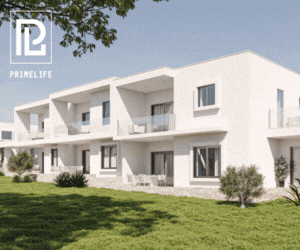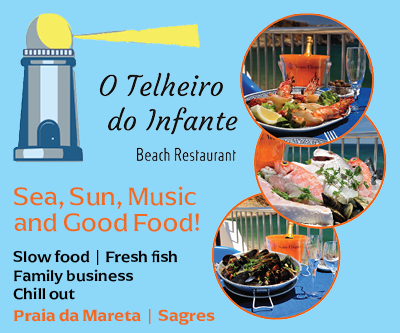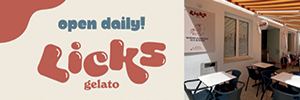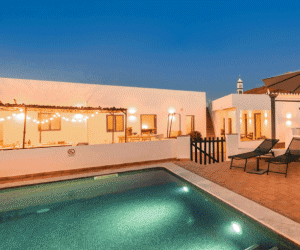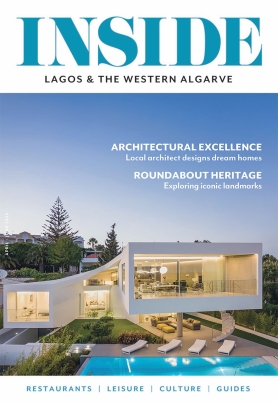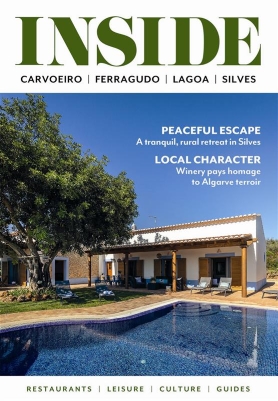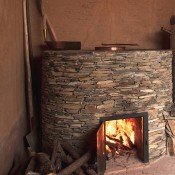
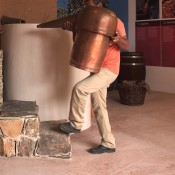
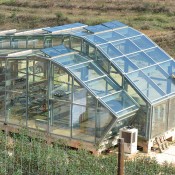
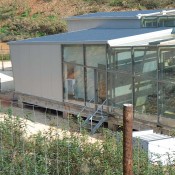
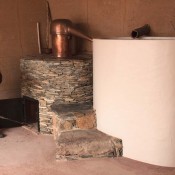
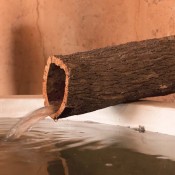
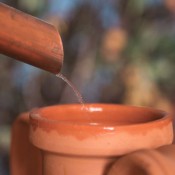
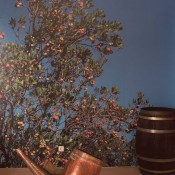
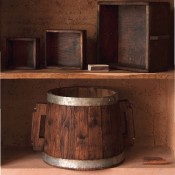
The strawberry tree is the star of two new projects being developed in the Western Algarve.
An iconic calling card for Monchique, medronho brandy is known far beyond the hills that witness its distillation. Medronho is made from the fuzzy, yellowish-red berries of the strawberry tree, Arbutus unedo, which, despite the name, is actually a bush, indigenous to Portugal and commonly found in the centre of the country, as well as in the Algarve. Medronho manufacture was once a family affair, with small distilleries all across the Monchique area producing this powerful, clear firewater. However, due to strict government regulations and the small dimension of the distilleries, there has never been a fully-fledged medronho industry. Until now, that is: located in the secluded rural landscape of Bensafrim and covering a whopping 271 hectares, Corte Velada is a large-scale project focused on producing and selling high-quality strawberry trees and berries, not only for the production of brandy, but mainly as a fruit and ornamental plant.
With €6mn invested thus far, this innovative project began back in 2009, the brainchild of a Norwegian family, who wanted to give something back to the Algarve, a region they have been visiting for years. Besides medronho production, plans for Corte Velada include a four-star hotel, which will join the eight dams and 14 kilometres of nature trails already constructed.
But for now, Ricardo Jacinto, the project’s director and head researcher, has his eyes set on the medronho berries. The first step involved improving the quality of the strawberry trees, to ensure the project’s sustainability. How was this achieved? By cloning only the best trees, to maximise production. With the help of a state-of-the-art greenhouse, a unique prototype with the flashy price tag of €500,000, the team at Corte Velada is creating cloned medronho bushes, which start producing fruit in a shorter period of time and are able to adapt to different climates. “This development process has been done for years to other fruit trees, but somehow nobody’s ever done it with the strawberry tree,” says Ricardo Jacinto. These new and improved strawberry trees can be sold to farmers worldwide, who wish to establish their own plantations, whilst the berries can be sold directly to other industries, such as the beauty, pharmaceutical and food industries, which will make the most of their antioxidant and anti-inflammatory properties to create cosmetic products, medicines or healthy snacks. The surplus berries will be used to make brandy and the construction of an on-site distillery is set to take place in the next months. “We’ve always set our sights on being self-sufficient, and the distillery is part of that vision,” explains the director.
A very different entity that is also committed to promoting these small berries is the parish council of Marmelete, a small village with about 600 inhabitants, located close to Monchique. “We wanted to attract visitors to our municipality but we didn’t have many tourist attractions, and the ones we had were unfortunately under-promoted,” says young parish president Marta Martins. Her solution was simple: to create a place where medronho and its rich history would take centre stage. The result was the opening of the Casa do Medronho de Marmelete (Marmelete House of Medronho) last October, following the conversion of the parish’s old garage into a fully working distillery. Whilst the works took less than a year to complete, the president said she had to cut through a lot of red tape to see the project come to life, as it’s rather unusual for a parish council to have a working community distillery.
“There was a lot of field work involved and we visited many distilleries and old cellars,” she explains. The purpose of such visits was to collect information and ideas, making the Casa do Medronho a faithful replica of a traditional distillery, from its taipa (rammed earth) walls to its vital caldeira (boiler).
At the Casa, visitors can learn more about the production process, view a collection of traditional utensils, taste local products such as sausages, sweets and, of course, medronho or melosa (which combines medronho brandy and honey), or even distil their own medronho (by appointment only). The local council parish has also created a Medronho Roadmap, which includes nine local licensed distilleries open for visits, which work in partnership with the Casa to offer a few workshops, such as the medronho berry picking workshop. As part of the activity, visitors help pick the fruit and then enjoy a relaxed lunch in the countryside. The daughter of a medronho distiller, Marta Martins stresses that much of the appeal of medronho making lies exactly in its social side, as people use it as an excuse to gather around the table and drink. “We aim to turn these distilleries into local tourist attractions, as the landscape around them is beautiful and the whole process couldn’t be more authentic.”
The Casa do Medronho de Marmelete is open Monday to Friday, from 9am – 12.30pm and 2pm – 5pm. Group visits take place at weekends by appointment (Tel: 282 955 121 [email protected]). Ticket prices start at €1.
Text Ana Tavares
Photos 1000olhos.pt & Ana Varela

